Dinghy Motor Handing & Storage
--Blogpost written by Bob
For our (future) 10-foot rigid hull inflatable (Apex 10 Lite), we plan to buy a 10 HP Yamaha 4-cycle outboard. The weight of the new outboard engine is 89 pounds--more than we can handle without some mechanical advantage. We have to be able to lift the motor from the dinghy's transom (while in the water) up to a motor mount on the stern rail of s/v Rainy Days--about six or seven feet above the water.
For long passages including our trip each way on the ICW, the dinghy will be safely stored upside down on the foredeck. It may have to be partially deflated so that we have enough room on the foredeck for anchoring and handling dock lines. (The alternative to storing the dinghy on deck involves the use of davits on the stern and because of our relatively narrow stern and the additional complexity, we decided against the use of davits.)
This blogpost is about items we have already purchased and installed as well as items we plan to purchase in the near future to accomplish the handling of the dinghy's outboard motor. I will append this blogpost as we purchase and install new items.
Outboard Motor Mount
We already purchased the Edson stern rail outboard motor mount--it is rated for motors up to 100 pounds (about 15 HP). Though somewhat pricey, I like the rugged construction of this motor mount.
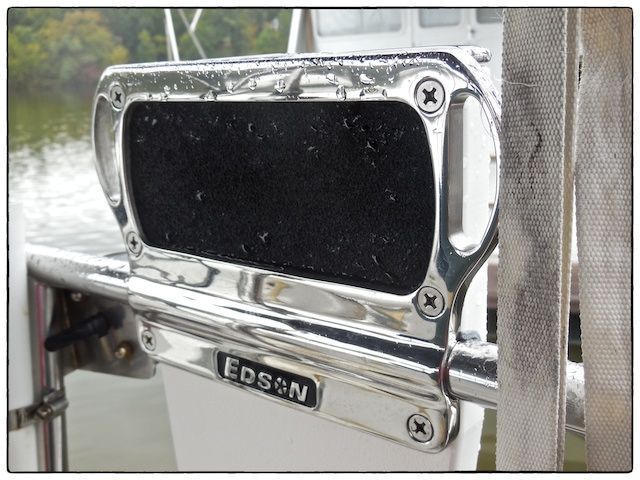 |
| The top of the Edson outboard motor mount is constructed from 316 stainless steel--it is a thing of beauty. |
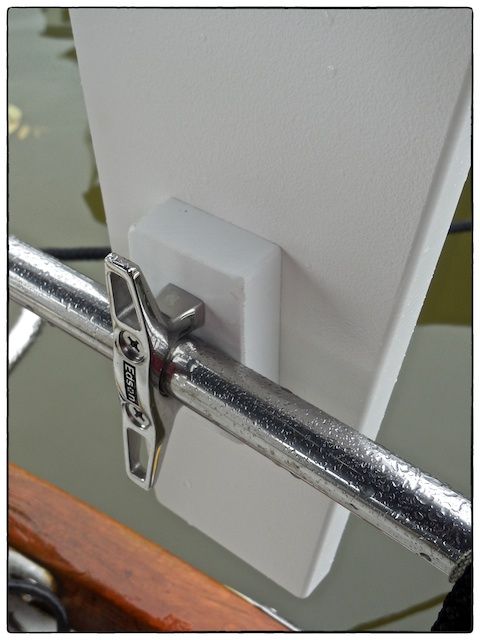 |
| I added a 1-1/2-inch thick block at the lower rail (made from Starboard) to make the outboard mount more nearly vertical. |
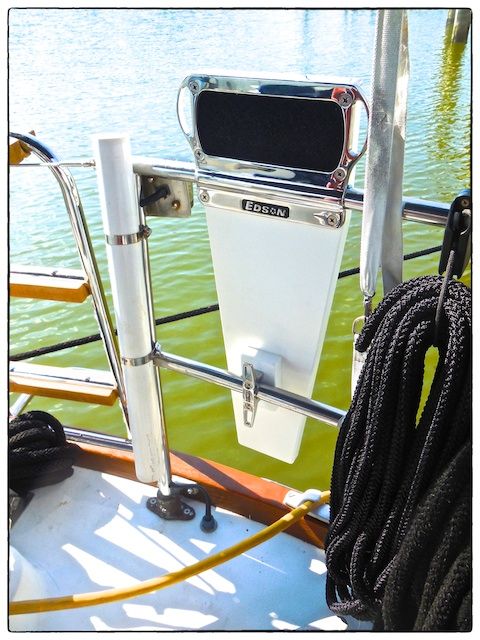 |
| We may have to move the outboard mount slightly, depending on where and how we mount the outboard motor lift. |
Motor Harness
We will be purchasing the OutboardLift 150 by Wengler Marine--it is rated at 150 pounds and uses 2-inch wide webbing. It uses black plastic buckles--based on my experience with our jerry jug supports, I think plastic buckles are better than stainless steel buckles for this purpose.
 |
| I like that the OutboardLift is made here in the U.S.A. This image is the slightly smaller model #100. |
Motor Lift
We compared the St. Croix-brand removable crane (rated at a 175-pound load with a 7:1 mechanical advantage) and the KatoLift 230 (rated at a 230 pounds with a 3:1 or 4:1 mechanical advantage). The KatoLift 230 (made by Kato Marine in Annapolis) seems to be a better selection because its curved design would not interfere with our bimini frame. The KatoLift 230 has less reach than the St. Croix-brand cranes.
The KatoLift 230 would reduce the effective load lifting our 89-pound outboard engine to either 30 pounds (if using 3:1 advantage) or 22 pounds (if using 4:1 advantage)--I think we'll go with the 4:1 mechanical advantage to minimize our effort.
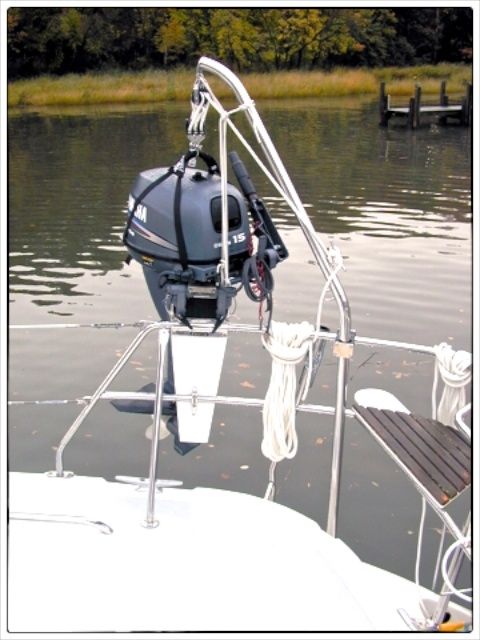 |
| This image from Kato Marine's website shows the KatoLift 230 and it's curved or angled structure. It is very clean and rugged looking. |
We expect to order and install the outboard lift during the winter.
Summary
Like many other systems on a sailboat, we will buy and install one item at a time and plan the best we can for the future items. Our goal is to get this system completely installed by next spring when we purchase the new rigid hull inflatable dinghy and outboard motor.
Thanks for following our blog!
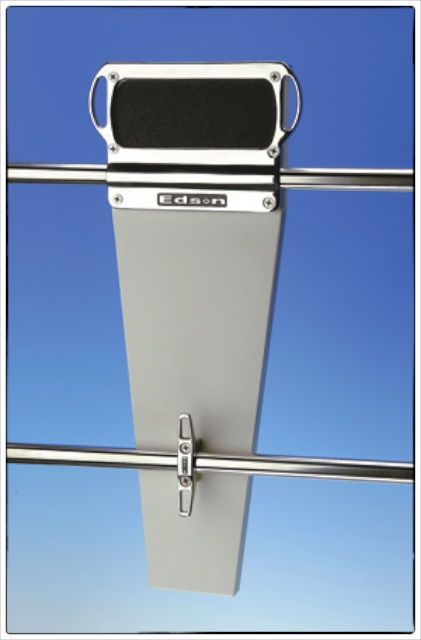
No comments:
Post a Comment